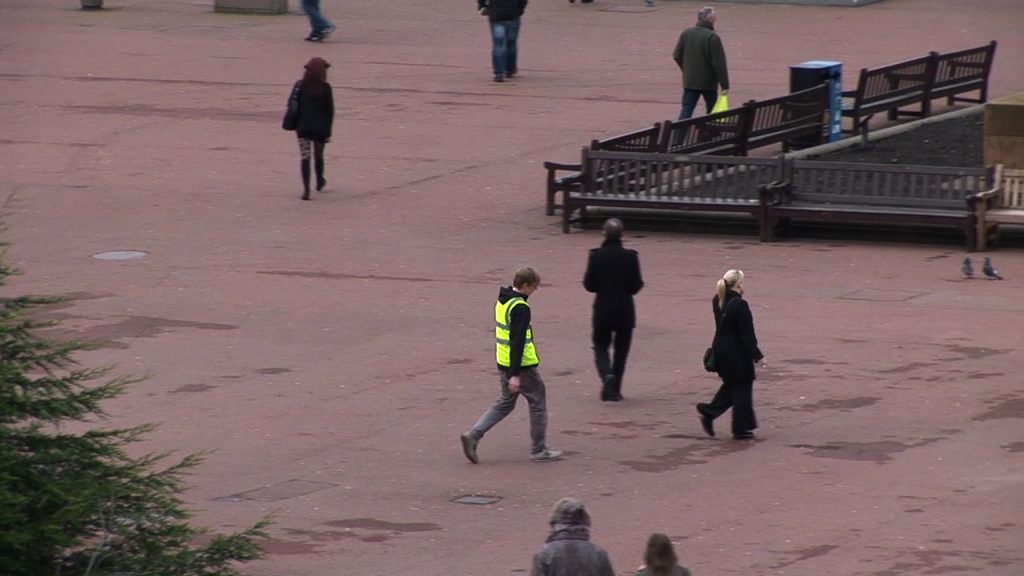
Echoing Movements (2012)
As part of the release of the hardcover release of my book, Walking as Artistic Practice (softcover comes out in April!), I’m going to be publishing some brief interviews with the various artists, authors, researchers, creatives, collectives, and platforms whose art practice, written material, or other works I cite and mention.
My eleventh interview in this series is with Bradley Davies who was born in London, and studied at the Glasgow School of Art and later to HfBK Staedelschule, Frankfurt am Main. He currently lives and works in Berlin. The work he makes is about looking into the present conditions and parameters we live in, the kinds of narratives that form our social and political systems, and our beliefs and daily routines.
EM: First, thank you for chatting with me about your work Echoing Movements (2012). I cite this work in chapter five (Who Gets to Walk and Where?) in the subsection “Surveillance.” How would you describe this work for people who might not be familiar with it?
BD: The work is a film that follows myself (dressed in a hi-vis jacket), and friends, who follow one another and others passing by. I take the lead in following others’ walks, and bit by bit I am being followed myself, my walk is being mimicked, in a sort of Conga line of walkers/followers. The audio dubbed on top was footsteps of myself and a friend recorded in the Hamilton Mausoleum, which once held the longest echo (in terms of fabricated acoustics). The soundtrack crescendos with echoing footsteps, the change of person/direction being followed is noted by a whistle. In the end the footsteps become more of a military march. The film overall has surveillance quality to it, being watched from a discreet distance, following these individuals walking around, watching their movements.
EM: What are your thoughts on walking as artistic practice?
BD: Thinking about walking as an artistic practice is interesting, I think for me that walking could be more expanded to being more about movement, the feeling of going somewhere by foot is a point of departure but I took more interest in the transfer from one thing or individual to another, the movement, the walk was simply a part of this process. Observing the movement was more the way I was thinking. I live in Berlin, and in German there’s a saying that goes, “Der Weg ist das Ziel”, which translates as “the journey is the goal”. I like that, it’s a journey whether there is a point to it or not.
EM: Can you tell us about any upcoming or recent projects you are excited about?
BD: The next exhibition coming up is this December at the Kunstverein Heidelberg, in Germany. Last year, I did an installation in Cologne at the Temporary Gallery where I took an anecdote about the Cologne cathedral that was once used by Napoleon’s cavalry during the French occupation in Cologne as a stables. Using this as my initiative to make a soundtrack working together with a local community choir to imitate horse sounds, and stable noises using the art of foley sound effects. It became a carnivalesque imitation of a day in the life of an imagined Cologne-Cathedral/French-

Echoing Movements (2012)


